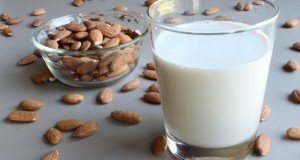Alpha lipoic acid: A potent antioxidant that can reverse metabolic syndrome
(NaturalHealth365) According to the U.S. Centers for Disease Control and Prevention (CDC), a full third of the adult population of the United States suffers from metabolic syndrome – a constellation of unhealthy conditions that often includes insulin resistance, high blood pressure, high blood sugar, overweight, high triglycerides and low HDL cholesterol. But, what you’ll notice is the lack of information about how alpha lipoic acid can help people avoid serious harm to their health. (This report hopes to shed a helpful light on the issue)
In addition to threatening health in and of itself, metabolic syndrome can send the risk of serious disease – such as diabetes, cancer and heart disease – skyrocketing. But research on a natural compound is sparking hope that metabolic syndrome can be reversed.
A new review of studies shows that supplementation with alpha-lipoic acid (ALA) can relieve and treat key components of this dangerous condition.
What exactly is alpha lipoic acid?
An organosulfur compound produced naturally by the body, ALA is responsible for turning nutrients into energy. It also scavenges free radicals that can harm organs and tissues, while protecting delicate cell mitochondria and promoting efficient metabolism. By the way, ALA is wonderful for the liver.
Unlike the antioxidant vitamins C and E, ALA is simultaneously water-soluble and fat-soluble. This quality means that the compound is easily absorbed, and capable of passing into the brain and nerve cells.
Note: alpha-lipoic acid is not to be confused with alpha linoleic acid, an essential fatty acid which shares the same abbreviation.
Research confirms: ALA targets metabolic syndrome with potent antioxidant effects
In an extensive review of pooled data published in Expert Opinion on Investigational Drugs, researchers credited ALA with various beneficial effects, and noted its promise as a therapeutic natural agent for metabolic syndrome.
A powerful antioxidant, ALA neutralizes a specific – and particularly dangerous – group of free radicals known as peroxynitrites. These contain both oxygen and nitrogen, and are strongly associated with the development of chronic inflammation, nervous system disorders and atherosclerosis.
In addition, ALA helps to regenerate and recycle other important antioxidants produced by the body, including coenzyme Q10 and the vitamins C and E.
In fact, animal studies have shown that ALA can reduce brain damage after a stroke – and increase the risk of survival by three-fold. Researchers believe this effect is due to ALA’s ability to recharge and recycle the life-sustaining antioxidant glutathione, which is depleted by the oxidative stress associated with stroke.
Finally, ALA binds to – and helps to detoxify – heavy metals such as mercury, cadmium, arsenic and lead.
ALA also fights nerve damage, hypertension and obesity in metabolic syndrome
Alpha-lipoic acid’s many beneficial effects make it appear tailor-made to treat, prevent and even reverse metabolic syndrome. This versatile compound helps to lower blood pressure – especially when given with the supplement acetyl-L-carnitine – improves the lipid profile (amount of fats in the blood), reduces blood sugar and even promotes weight loss. This last benefit is particularly important, as experts note that abdominal obesity is a key component of metabolic syndrome.
Even in cases in which metabolic syndrome has progressed to diabetes, ALA can help reduce the damaging physical consequences by improving blood flow, fighting oxidative stress and relieving diabetic neuropathy – nerve damage accompanied by numbness, burning, itching, tingling and pain.
In a double-blind placebo-controlled study published in Diabetes Care, 181 diabetic patients were divided into four groups, with three groups receiving different dosages of ALA – 600 mg, 1200 mg and 1800 mg – and the fourth group being given only placebo.
After five weeks, researchers discovered that all three dosages of ALA significantly decreased symptoms of stabbing and burning pain, and caused reductions in the participants’ Neuropathic Impairment Score.
Interestingly, the team noted that the lowest dose – 600 mg – was the most effective, cutting the severity of symptoms by an impressive 51 percent.
How can I improve my levels of ALA?
ALA is produced in the body, and is found in virtually all foods. However, shortfalls are possible, as ALA levels can sharply decrease with age.
While ALA-rich foods such as brewer’s yeast, broccoli and organ meats – particularly liver and kidney – can help raise levels, supplementation may be needed in order to reach optimal amounts, especially in older adults.
Natural health experts may recommend between 20 and 50 mg a day for general antioxidant support, with higher dosages – up to 800 mg a day – indicated for diabetes and diabetic neuropathy.
Note: the R-dihydrolipoic form of ALA, which is now commercially available, is considered to be more potent, and requires lower dosages. For maximum benefit, take ALA with biotin and vitamin B complex.
Although ALA side effects are rare, they can include skin rash and gastrointestinal problems.
Of course, as always, we suggest you talk to an experienced healthcare provider – in order to determine the ALA dosage that is right for you – and to start utilizing an amazing substance than can help to prevent or banish the dangers of metabolic syndrome.
Editor’s note: The NaturalHealth365 Store offers the finest, naturally occurring form of ALA on the market. Click here to order today!*
*And, yes, your purchase helps to support our operations at NaturalHealth365. Thank you.
Sources for this article include:











